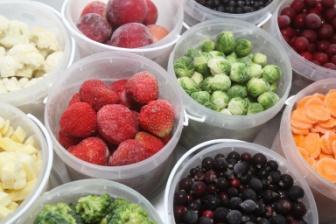FFVP-CFD_Appendix_C4a1_FAQs_by_Schools
FFVP-CFD_Appendix_C4a1_FAQs_by_Schools.(2014-07-07).docx
Evaluation of the Pilot Project for Canned, Frozen, or Dried (CFD) Fruits and Vegetables in the Fresh Fruit and Vegetable Program (FFVP)
FFVP-CFD_Appendix_C4a1_FAQs_by_Schools
OMB: 0584-0598
Evaluation of the Canned, Frozen, or Dried Fruits and Vegetables Pilot Project in the FFVP
Appendix C.4a1. FREQUENTLY ASKED QUESTIONS BY SCHOOLS
OMB Control No: 0584-XXXX
Expiration date: XX/XX/XXXX
Evaluation of the Canned, Frozen, or Dried Fruits and Vegetables Pilot Project
in the Fresh Fruit and Vegetable Program



FREQUENTLY ASKED QUESTIONS
What is the Purpose of the Study? As mandated by Congress, the U.S. Department of Agriculture’s (USDA) Food and Nutrition Service (FNS) is funding a study to learn how schools’ implementation of the standard FFVP and a pilot project offering canned, frozen, or dried fruits and vegetables affects students’ diets and satisfaction with the free fruit and vegetable snacks. The FNS has contracted with Mathematica Policy Research, an independent research firm, to conduct the study.
When will data collection take place? The data collection will begin in fall 2014 for a10-12 week period and continue in spring 2015 for a 10-12 week period after the pilot is in place starting January 1, 2015. Data collection will be scheduled for a convenient one week period in your school in the fall and again in the spring.
What are participating schools asked to do for the study? Your school applied and was selected for the pilot project to design and implement the way the pilot would work in elementary schools. The study will assess the impact of the pilot on students’ fruit and vegetable consumption during the school day and what strategies were used by schools to serve fruit and vegetable snacks to students during the 2014-2015 school year. For each school included in the study, Mathematica will:
Ask the principal, school food service manager, selected classroom teachers, and parents of selected classroom students to complete brief surveys.
Ask the school food service manager to provide data on the number of USDA-reimbursable meals and snacks and on portion sizes for fruits and vegetables served.
Randomly select approximately 12 students from each of two or three classrooms in grades 4, 5, and 6. During the week of school data collection, a trained interviewer will observe the distribution of fruit and vegetable snacks in each of the sampled classrooms.
Send a letter to the parent/guardian of each selected student explaining the study (and requesting the return of a signed consent form, if your district requires one).
Ask all students in the selected classrooms to complete a brief survey about their experiences with the fruit and vegetable snacks. The smaller number of selected students in each selected classroom will participate in an interviewer-administered dietary recall during the school day. In preparation for the dietary recall interview, students will also complete a short food diary to help them remember foods they ate during the school day.
Will it be Confidential? Mathematica has strict procedures to store data securely and to ensure the confidentiality of the names of students and parents by removing names before data is analyzed and will not be written in any report or given to anyone other than the study team. No information directly identifies any respondent. We take confidentiality and security of data very seriously. Information we collect will be kept strictly confidential.
What if I Have Questions? If you have any questions about the study, please contact Rhoda Cohen, Mathematica Survey Director, or her staff at (800) 232-8024 or email [email protected].
According to the Paperwork Reduction Act of 1995, an agency may not conduct or sponsor, and a person is not required to respond to, a collection of information unless it displays a valid OMB control number. The valid OMB control number for this information collection is 0584-XXXX. The time required to complete this information collection is estimated to average 20 minutes per response, including the time for reviewing instructions, searching existing data sources, gathering and maintaining the data needed, and completing and reviewing the collection of information.
C.4a1.
| File Type | application/vnd.openxmlformats-officedocument.wordprocessingml.document |
| Author | LMendenko |
| File Modified | 0000-00-00 |
| File Created | 2021-01-25 |
© 2025 OMB.report | Privacy Policy